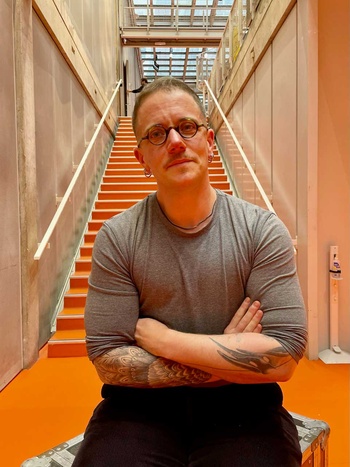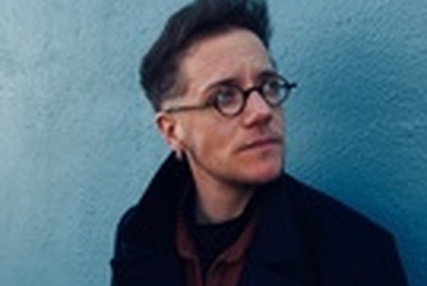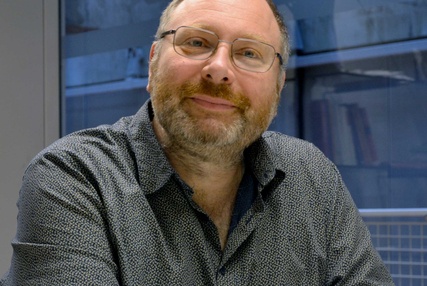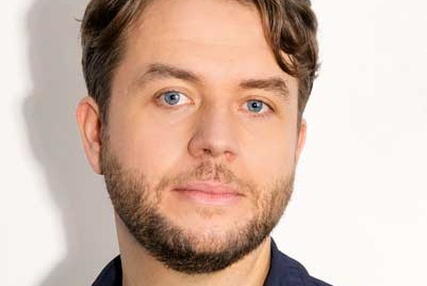Outre le développement de nouveaux modèles de représentation de la forme, la constitution d’un corpus théorique au service de l’élaboration formelle, et la mise au point d’outils informatiques dédiés à ces enjeux cruciaux, l’une des grandes idées qu’avait Sasha Blondeau lorsqu’iel s’est lancé dans sa résidence en recherche artistique autour des enjeux d’élaboration de la forme, c’était, tout simplement, de discuter. Car, avant de formuler la moindre hypothèse, un état de l’art s’imposait. Accompagné de Jean-Louis Giavitto et de Jérôme Nika, Sasha Blondeau s’est donc lancé dans une série d’entretiens avec des compositeur.rice.s d’horizons et d’esthétiques variés, voire aux antipodes les uns des autres. Elles et ils ont ainsi abordé la question avec, pêle-mêle, Philippe Manoury, Marco Stroppa, Alexandros Markeas, Rebecca Saunders, Claudia Jane Scroccaro, Florent Caron Darras et Arthur Lavandier. Au vu de la richesse des débats, force est de constater que le sujet est plus que prometteur.
L’élaboration de la forme est très rarement un sujet de conversation entre compositeurs – beaucoup plus rare, en tout cas, que ce ne le fut par le passé, à la grande période des post-sériels par exemple. Et c’est un sujet encore moins abordé dans le cadre des différents cursus de composition, que ce soit dans les conservatoires ou lors des masterclass, où la question de la forme reste un impensé. « Dans les écrits de compositeurs, cette question est évidemment évoquée, mais sans le dire vraiment, ou en la contournant, note Sasha Blondeau. Même à l’Ircam, on ne discute pas de ces sujets qui relèvent de l’intime du travail de composition. » Le seul fait d’engager la discussion fait donc de cette résidence une grande première. Pour autant, peut-on parler d’une « libération de la parole » ?
À la lecture des compte-rendus de ces entretiens, on s’aperçoit d’abord que, quand bien même ces compositeur.rice.s parlent tous de « forme », les concepts que cette terminologie recouvre ne semblent pas toujours être exactement les mêmes selon les locuteurs : dramaturgie pour l’un.e, équilibre des proportions pour un.e autre, extrapolation des développements potentiels du matériau musical via une syntaxe symbolique pour un.e autre encore… Marco Stroppa pointe au passage un point aveugle de la réflexion : la perception de la forme est parfois bien différente de celle pensée dans l’écriture. Partant de là, son approche compositionnelle de la forme peut faire intervenir des « métaphores », voire des « personnages », qui n’ont de sens que pour lui mais vont guider les évolutions du matériau.
Dans ces conversations à bâtons rompus, on jongle également avec des cartes visuelles, avec les relations ou enchaînements d’éléments ou de « gestes », et on ne rechigne pas non plus à jouer avec les formes canoniques héritées de l’histoire de la musique… Bref, selon les parcours et les pratiques (les musiques de film pour Arthur Lavandier, par exemple, ou l’improvisation générative utilisée par Alexandros Markeas), la « cuisine » (dixit Blondeau, qui précise aussitôt « dans le bon sens du terme ») peut changer du tout au tout.
« Cela nous a toutefois ouvert des perspectives très intéressantes. La première chose qui me saute aux yeux, c’est que tous les compositeur.rice.s ne sont pas autant obsédé.e.s par la forme que moi. Certain.e.s sont même assez méfiant.e.s lorsqu’on évoque une « approche », en tant que telle, de la forme. J’observe cependant que nous développons chacun.e des moyens, des recettes, pour parvenir à composer, quand bien même ce seraient des béquilles psychologiques. »
Quelques invariants se dégagent. D’abord le principe, au cours de la composition, d’une négociation inlassable entre la formalisation et l’intuition. « Aussi fort soit le formalisme que l’on a patiemment élaboré, celui-ci n’est pas toujours en adéquation avec l’envie du moment, ou la nécessité qui se dégage du matériau, poursuit Sasha Blondeau. Toutes ces conversations m’ont mis devant un des paradoxes que, peut-être, je ne voulais pas voir dans ma propre démarche : certes, je travaille avec du symbolique, mais ce symbolique même me donne une grande liberté car il rend les constructions formelles beaucoup plus interprétables, donc plus souples. À bien des égards, les « grammaires génératives » auxquelles a recours Philippe Manoury sont beaucoup plus prescriptives. Mais lui aussi est en constante négociation avec ce qu’elles lui proposent. »
« L’intérêt de la formalisation, dit en effet Manoury, c’est que ça me présente des situations que je n’aurais pas pu imaginer intuitivement. Et ça fait réagir mon intuition, ça la fait raisonner de manière différente. »
 Quant à Rebecca Saunders, elle avoue se méfier de toute planification préalable. Une méfiance qui ne fait que s’accentuer avec l’expérience : « Plus vous vieillissez, plus vous avez d’expérience, plus vous pouvez évaluer par votre intuition ce qui va se passer. Parce qu’avec l’expérience, vous acquérez des connaissances grâce auxquelles vous pouvez utiliser votre intuition. »
Quant à Rebecca Saunders, elle avoue se méfier de toute planification préalable. Une méfiance qui ne fait que s’accentuer avec l’expérience : « Plus vous vieillissez, plus vous avez d’expérience, plus vous pouvez évaluer par votre intuition ce qui va se passer. Parce qu’avec l’expérience, vous acquérez des connaissances grâce auxquelles vous pouvez utiliser votre intuition. »
Cette négociation inlassable fait du reste jaillir un phénomène assez inattendu, note Sasha Blondeau : « De vraies similarités se font jour dans des manières de travailler que tout pourtant semble opposer. »
Ce qui nous amène à un deuxième invariant : les approches de la forme évoluent constamment, pour tous les compositeur.rice.s, quel que soit leur âge. Combinée à la diversité des méthodes compositionnelles, cette évolution complique grandement l’éventuelle conception d’un outil informatique dédié. L’approche visuelle semble néanmoins en avoir séduit beaucoup – parmi lesquels Alexandros Markeas ou Sasha Blondeau bien sûr, qui y ont déjà fréquemment recours.
« Quand je leur ai montré mes visualisations, la vision synthétique de la forme qui s’en dégage, et notamment celle des récurrences temporelles, les ont beaucoup intéressé.e.s, dit Sasha Blondeau. Ils semblent apprécier le recul que cela donne, surtout sur la forme longue. Ce qui nous oriente plutôt vers des outils réflexifs, qui serviraient au compositeur.rice de miroir au travail en cours, et d’aide à la décision dans le cadre de la négociation entre les contraintes auto-imposées et les intuitions de l’instant.
Un outil d’aide à la conception pourrait ainsi permettre au compositeur.rice de générer des structures préétablies et d’expérimenter des ruptures contrôlées, favorisant à la fois la rigueur et l’improvisation. Il s’agirait de pouvoir varier les points de vue en laissant toujours une place à la manipulation “manuelle” qui intègre pleinement le geste intuitif. On peut également imaginer une interface flexible, permettant d’organiser les idées sous forme de cartes mentales, de typologies sonores ou de systèmes modélisés, qui donneraient aux créateurs la liberté de structurer et manipuler leurs matériaux de manière non linéaire. »
En somme le travail de recherche, comme celui du.de la compositeur.rice, ne fait que commencer…
![]()
Jérémie Szpirglas
Photo : Sasha Blondeau à l'Ircam © Deborah Lopatin





